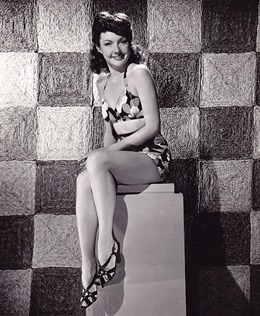![]()
Over the past fifty-some years, she has gone from a chipper country starlet to a worldwide icon of music and movies whose fans consistently pack a theme park made in her honour. Dolly Parton is loved, lauded, and larger than life. But even her most devoted admirers might not know all there is to this Backwoods Barbie.
1. AMUSEMENT PARK RIDES AREN’T FOR HER.
Her theme park Dollywood offers a wide variety of attractions for all ages. Though she’s owned it for nearly 30 years, Parton has declined to partake in any of its rides. She has explained, "My daddy used to say, ‘I could never be a sailor. I could never be a miner. I could never be a pilot,’ I am the same way. I have motion sickness. I could never ride some of these rides. I used to get sick on the school bus."
2. SHE ENTERED A DOLLY PARTON LOOK-A-LIKE CONTEST—AND LOST.
![]()
Apparently Parton doesn’t do drag well. She told ABC, “At a Halloween contest years ago on Santa Monica Boulevard where all the guys were dressed up like me, I just over-exaggerated my look and went in and just walked up on stage…I didn’t win. I didn’t even come in close, I don’t think.”
3. PARTON SPENT A FORTUNE TO RECREATE HER CHILDHOOD HOME.
![]()
She and her eleven siblings were raised in a small house in the mountains of Tennessee that lacked electricity and indoor plumbing. When Parton bought the place, she hired her brother Bobby to restore it to the way it looked when they were kids. "But we wanted it to be functional," she recounted on The Nate Berkus Show, "So I spent a couple million dollars making it look like I spent $50 on it! Even like in the bathroom, I made the bathroom so it looked like an outdoor toilet.” You do you, Dolly.
4. SHE WON’T APOLOGIZE FOR RHINESTONE.
![]()
Parton is well-known for her hit movies Steel Magnolias and 9 to 5, less so for the 1984 flop Rhinestone. The comedy musical about a country singer and a New York cabbie was critically reviled and fled from theaters in just four weeks. But while her co-star Sylvester Stallone has publicly regretted the vehicle, Parton declared in her autobiography My Life and Other Unfinished Business that she counts Rhinestone’s soundtrack as some of her best work, especially "What a Heartache."
5. PARTON IS MILEY CYRUS’S GODMOTHER, SORT OF.
![]()
"I’m her honorary godmother. I’ve known her since she was a baby," Parton said to ABC. "Her father (Billy Ray Cyrus) is a friend of mine. And when she was born, he said, ‘You just have to be her godmother,’ and I said, ‘I accept.’ We never did do a big ceremony, but I’m so proud of her, love her and she’s just like one of my own." Parton also played Aunt Dolly on Cyrus’s series Hannah Montana.
6. SHE RECEIVED DEATH THREATS FROM THE KU KLUX KLAN.
![]()
In the mid-2000s, Dollywood joined the ranks of family amusement parks participating in "Gay Days," a time when families with LBGT members are encouraged to celebrate together in a welcoming community environment. This riled the KKK, but their threats didn’t scare Dolly. "I still get threats," she has admitted, "But like I said, I’m in business. I just don’t feel like I have to explain myself. I love everybody."
7. PARTON STARTED HER OWN "LIBRARY" TO PROMOTE LITERACY.
![]()
In 1995, she founded Dolly Parton’s Imagination Library with the goal of encouraging literacy in her home state of Tennessee. Over the years, the program—built to mail children age-appropriate books—spread nationwide, as well as to Canada, the U.K., and Australia. When word of the Imagination Library hit Reddit, the swarms of parents eager to sign their kids up crashed the Imagination Library site. It is now back on track, accepting new registrations and donations.
8. PARTON’S HOMETOWN HAS A STATUE IN HER HONOR.
![]()
A stone’s throw from Dollywood, Sevierville, Tennessee is where Parton grew up. Between stimulating tourism and her philanthropy, this proud native has given a lot back to her hometown. And Sevierville residents returned that appreciation with a life-sized bronze Dolly that sits barefoot, beaming, and cradling a guitar, just outside the county courthouse. The sculpture made by local artist Jim Gray was dedicated on May 3, 1987. Today it is the most popular stop on Sevierville’s walking tour.
9. THE CLONED SHEEP DOLLY WAS NAMED AFTER PARTON.
![]()
In 1995 scientists successfully created a clone from an adult mammal’s somatic cell. This game-changing breakthrough in biology was named Dolly. But what about Parton inspired this honour? Her own ground breaking career? Some signature witticism or beloved lyric? Nope. It was her iconic big bust. English embryologist Ian Wilmut revealed, "Dolly is derived from a mammary gland cell and we couldn’t think of a more impressive pair of glands than Dolly Parton‘s."
10. SHE TURNED DOWN ELVIS.
![]()
After Parton made her own hit out of "I Will Always Love You," the King’s manager, Colonel Tom Parker, reached out in hopes of having Presley cover it. But part of the deal demanded Parton surrender half of the publishing rights to the song. She has shared, "Other people were saying, ‘You’re nuts. It’s Elvis Presley. I’d give him all of it!’" Parton has admitted, "But I said, ‘I can’t do that. Something in my heart says don’t do that.’ And I didn’t do it and they didn’t do it." It may have been for the best. Whitney Houston’s cover for The Bodyguard soundtrack in 1992 was a massive hit that has paid off again and again for Parton.
Text and images from MentalFloss
Filed under:
Article,
Country,
Music,
People Tagged:
American country singers,
Polly Parton ![]()
![]()




































































































